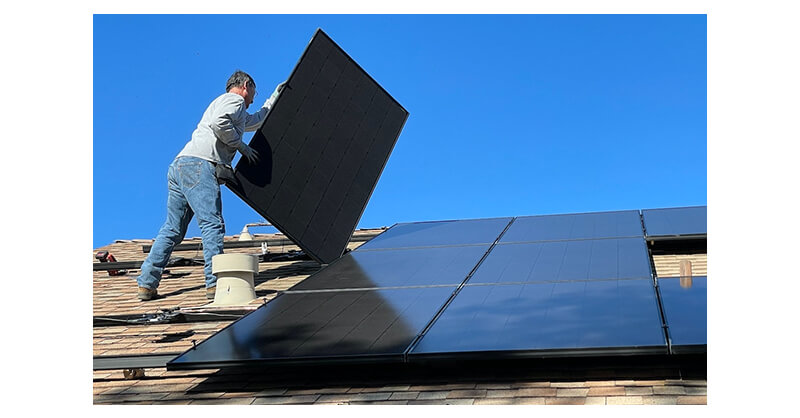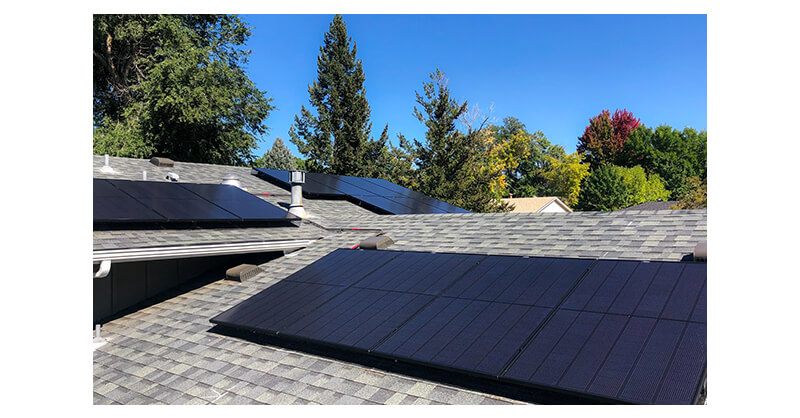Table of Contents

REC was founded in Norway in 1996, and since then, it has become a leading global supplier of solar panels. The company's mission is to provide solar energy solutions that are both high in performance and eco-friendly, aligning with the growing demand for clean energy. REC solar panels are manufactured using state-of-the-art facilities and processes that ensure long-term reliability.
REC offers several series of solar panels, each designed to meet different energy needs. Here's a breakdown of the key series:
| Series |
Technology |
Power Range (W) |
Efficiency |
Target Market |
| REC Alpha Pure |
Heterojunction (HJT) |
390W - 430W |
Up to 22.2% |
Residential, Commercial |
| REC TwinPeak 4 |
Multi-busbar, PERC |
370W - 400W |
Up to 20.8% |
Residential, Commercial |
| REC N-Peak 2 |
Mono n-type |
360W - 380W |
Up to 19.8% |
Residential, Commercial |
| REC Alpha Pure-R |
Lead-free, advanced HJT |
410W - 430W |
Up to 22.3% |
High-end Residential |
-
REC Alpha Pure: The Alpha Pure series is the pinnacle of REC's technological advancements, offering the highest efficiency through Heterojunction (HJT) cell technology. These panels are lead-free, supporting sustainability efforts.
-
REC TwinPeak 4: Known for its split cell design and multi-busbar technology, the TwinPeak 4 series excels in shaded conditions, offering a great balance between performance and affordability.
-
REC N-Peak 2: This series features n-type monocrystalline cells, which provide excellent durability and high performance in challenging environmental conditions.
REC Solar stands out due to its unique innovations, including:
-
Heterojunction Technology (HJT): HJT panels combine thin layers of amorphous silicon with crystalline silicon, resulting in higher efficiency, lower temperature coefficients, and better performance in low-light conditions.
-
Split Cell Technology: REC's Twin design splits the panel into two halves, reducing the impact of shading and improving energy yield. It also distributes heat more evenly, leading to longer panel life.
-
Multi-busbar Technology: By using multiple busbars, REC increases current flow and reduces resistance, boosting overall panel efficiency.
-
Lead-Free Panels: REC's Alpha Pure series is completely lead-free, making it an environmentally friendly choice for customers who are concerned about the environmental impact of solar panel disposal.
REC Solar panels are designed to deliver high output even in less-than-ideal conditions. Below is a table that highlights some of the key performance metrics:
| Metric |
REC Alpha Pure |
REC TwinPeak 4 |
REC N-Peak 2 |
| Efficiency (%) |
Up to 22.2% |
Up to 20.8% |
Up to 19.8% |
| Temperature Coefficient |
-0.26%/°C |
-0.34%/°C |
-0.34%/°C |
| Power Degradation (1st year) |
2.0% |
2.5% |
2.5% |
| Annual Degradation (years 2-25) |
0.25% |
0.5% |
0.5% |
Performance Over Time
This line chart compares the power degradation of three different REC solar panel series over 25 years. You can visualize how the Alpha Pure series retains more power compared to other models, showcasing REC's advanced technology.
REC offers some of the best warranties in the solar industry. Here’s a quick overview:
- Product Warranty: 20 years (extendable to 25 years when installed by an REC-certified installer).
- Performance Warranty: 25 years. REC guarantees that their panels will still produce at least 92% of their original output after 25 years.
These warranties demonstrate REC's confidence in the durability of their panels. The company’s solar panels are rigorously tested to withstand harsh weather conditions like hail, high winds, and snow loads, ensuring long-term reliability.

REC solar panels are priced competitively in the premium solar market, offering high performance at a lower cost per watt compared to some other premium brands. Factors like advanced technology, superior warranties, and higher efficiency ratings make REC an excellent value for homeowners and businesses looking to maximize their return on investment (ROI).
REC solar panels are an excellent choice for those seeking high-efficiency, durable, and eco-friendly solar panels. With a wide range of products, advanced technologies like HJT and split-cell design, and industry-leading warranties, REC has positioned itself as a top-tier solar panel manufacturer in the global market.
Whether you are installing solar panels for a residential property, a commercial building, or an industrial site, REC offers panels that cater to various needs with superior performance and durability. Their commitment to sustainability and eco-friendly manufacturing practices further enhances their appeal to environmentally conscious consumers.
8. FAQs
What is the lifespan of REC solar panels?
REC solar panels typically have a lifespan of 25 to 30 years, with high performance guaranteed through their 25-year warranty.
Can REC solar panels perform well in low-light conditions?
Yes, REC panels, particularly those using Heterojunction Technology (HJT), are designed to perform efficiently in low-light and shaded conditions.
Are REC solar panels suitable for residential installations?
Absolutely. REC offers several series, such as the Alpha Pure and TwinPeak, specifically designed for residential installations, offering high efficiency and space optimization.
How do REC panels compare to other premium brands?
REC panels are competitively priced with superior performance, offering high efficiency, better degradation rates, and strong warranties compared to other premium brands.
What environmental benefits do REC solar panels provide?
REC panels, especially the Alpha Pure series, are lead-free, supporting sustainability, and manufactured with a reduced carbon footprint, making them an eco-friendly solar option.







